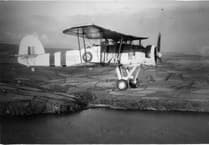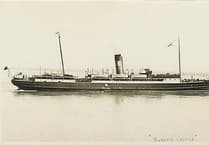The dust has just about settled on the 2025 local authority general election, held in this format since 2001. There are now 21 local authorities, but only five saw contested elections…
It is good that a number of people island-wide are prepared to put their head above the parapet, but it is not healthy for democracy that the number of contested elections is so low.
I believe that, as an island, we are over-governed and, sadly, too often by those who have not been subject to the discipline of a democratic election.
The structure of local government in the Isle of Man has been recognised as unsatisfactory since before the Second World War, but no consensus on how it should be reformed has been achieved. Proposals for reform were made by the Local Government Board and various committees in 1939, 1949, 1963, and 1967.
A Select Committee of Tynwald in 1985 recommended a thorough review, and an interim report of a further Select Committee in 1986 led to a consultation document, ‘Time for Change’, containing proposals by the Department of Local Government and the Environment, issued in 1991.
An initial report in 1992 proposed to reform local government on the basis of six authorities. The second interim report in 1993 advocated 12 authorities, and the final report in February 1994 recommended a structure based on 13 authorities. The report was received by Tynwald, but no action was taken before the general election in 1996.
At the time Tynwald received ‘Time for Change’, which in reality means the matter in question is put on the shelf, I moved for the report and recommendations to be approved, but the Council of Ministers, together with the majority of Tynwald members - many of whom wanted no change as they reflected the opposition of rural constituencies - meant I was unsuccessful.
The situation had arisen after a 1987 motion in Tynwald calling for the abolition of the domestic rate over a period of five years, on the grounds that the respective burdens of rates on urban and rural areas were inequitable. (It still very much is, almost 40 years later).
Tynwald had resolved that the Executive Council (as it was then) should consider and report on the issue. In April 1991, Tynwald was advised that the study had been widened to consider the future of local authorities (correctly, in my opinion).
After the 1996 election, the issue of reform of local government was reactivated by the Department.
In 1997, it issued a further report, ‘Securing a Future for Local Government’, also proposing 13 local authorities.
Opposition from the existing authorities led to ‘A Further Alternative Approach’ in September 1999, proposing a two-tier structure outside Douglas, retaining the then-existing 24 town, village, and parish authorities, with a second tier of four ‘area authorities’ which could exercise most local authority functions (including those of existing joint boards).
In 1999, as no progress had been made, the Council of Ministers admitted that it had been unable to agree on proposals, and Tynwald set up a further Select Committee, which reported in 2001 with a scheme to reduce the number of local authorities to four.
However, once again, it merely ‘received’ the report (back on the shelf again), declining to approve its recommendations.
The next set of proposals, also for four local authorities, were made by the Department of Local Government and the Environment in 2004 but were shelved because of opposition from the existing authorities.
An alternative plan, which would have preserved the existing authorities but transferred their waste collection and housing functions to joint boards, was produced shortly afterwards but also abandoned. The Department revived its previous proposals in 2005 but shelved them again due to lack of support.
In 30 years, the only step towards any reorganisation of local government - apart from the respective mergers of Onchan and Michael Village and Parish Commissioners - has been the power by order to merge two or more local authorities with their consent. This power has not been exercised.
However, in 2016 the village district of Laxey and the parish districts of Lonan and Maughold were merged to form the new parish district of Garff.
In 2020, the parish districts of Arbory and Rushen were similarly merged to form the new parish district of Arbory and Rushen, with separate electoral wards for each of the two former districts. There is also the island-wide local authority housing initiative.
When I was first elected to Douglas Town Council in 1983, the council consisted of an aldermanic bench of six members and six wards - St George’s, Athol, Hills, Murrays, Victoria, and Derby - each with three councillors, making a total of 24 representing Douglas at local authority level.
After the abolition of the aldermanic bench in 1988, for years I felt it would be easier for voters to have the same constituency boundaries as the House of Keys, and this eventually became reality.
So, back to the start of this piece: despite all the efforts to promote an all-island general election on April 24, only five of the 21 local authorities actually had a contested election. Indeed, some once again fell short of enough candidates to actually fill the seats available.
In Ballaugh there remain two vacancies to be filled, in Central Douglas one vacancy, in Jurby two vacancies, Port Erin one vacancy, and Ramsey South one vacancy.
Since my first election in 1983 and subsequent elections to the House of Keys, I have always ‘enjoyed’ the discipline of a contested election on every occasion.
So it was a matter of some regret to me that in Douglas, now our capital city, of the four wards - North, South, East, and Central - only one election was held.
Around the island, since the all-island general election for local authority members was introduced, there have been too many occasions where an election was not called because either sufficient members were nominated, or after by-elections to fill vacancies were called, only the required number stepped forward. This has been the case over a number of years in some local authorities.
Lots of people have a keen interest in what is going on in our island and yet never put their name forward for election.
Obviously, this may be due to a number of factors: work or family commitments, perhaps a reluctance to be on call 24-7, perhaps the feeling of whether your election would make any difference, or sadly, something of an apathy towards the present structure, powers, and responsibilities of local authorities?
It would be interesting to receive your feedback on this piece. Have you ever thought about putting your name forward but didn’t? Why did you decide against it in the end?
As a proponent of an ‘all-island rate’, with our population in the 85,000 area, I remain a supporter of the view from Tynwald in 1939, 1949, 1963, and 1967 that the present system of local authorities requires revision.
The work in the 1980s to once again work towards a smaller number, with a range of local powers best exercised at a local level, seems just as relevant today. Combination authorities to undertake certain functions collaboratively, such as the civic amenity site operations, seem a useful model — as long as they operate to an agreed standard and have the commitment of all involved.
What do you think… carry on as is, or is it at last time for change?
.jpeg?trim=0,0,0,0&width=752&height=501&crop=752:501)



.jpeg?width=209&height=140&crop=209:145,smart&quality=75)